Abstract
To determine the effect of prolonged digitoxin administration on contractile function of nonfailing myocardium, right ventricular papillary muscle mechanics were examined after 6 or 24 wk of glycoside administration to control and pulmonary artery banded cats. Resting length-tension relations were not affected by digitoxin; however, isometrically developed force and the maximal rate of force development at the peak of the length-tension curve were increased in all treated groups. In untreated animals, banding resulted in a 28% incidence of deaths from heart failure. 6 wk after constriction, contractile function was depressed whereas normal function was observed 24 wk after banding. Digitoxin significantly reduced mortality from heart failure and enhanced the recovery of contractile function; contractile function in the 6 wk banded treated group approached that of untreated control and 24-wk banded groups. The long-term effects of digitoxin on contractile function were not importantly related to the temporal association between banding and institution of glycoside administration. Development of myocardial hypertrophy was comparable in treated and untreated banded groups.These results demonstrate that a significant positive inotropic effect persists in both normal and nonfailing hypertrophied myocardium during chronic digitoxin administration.
Full text
PDF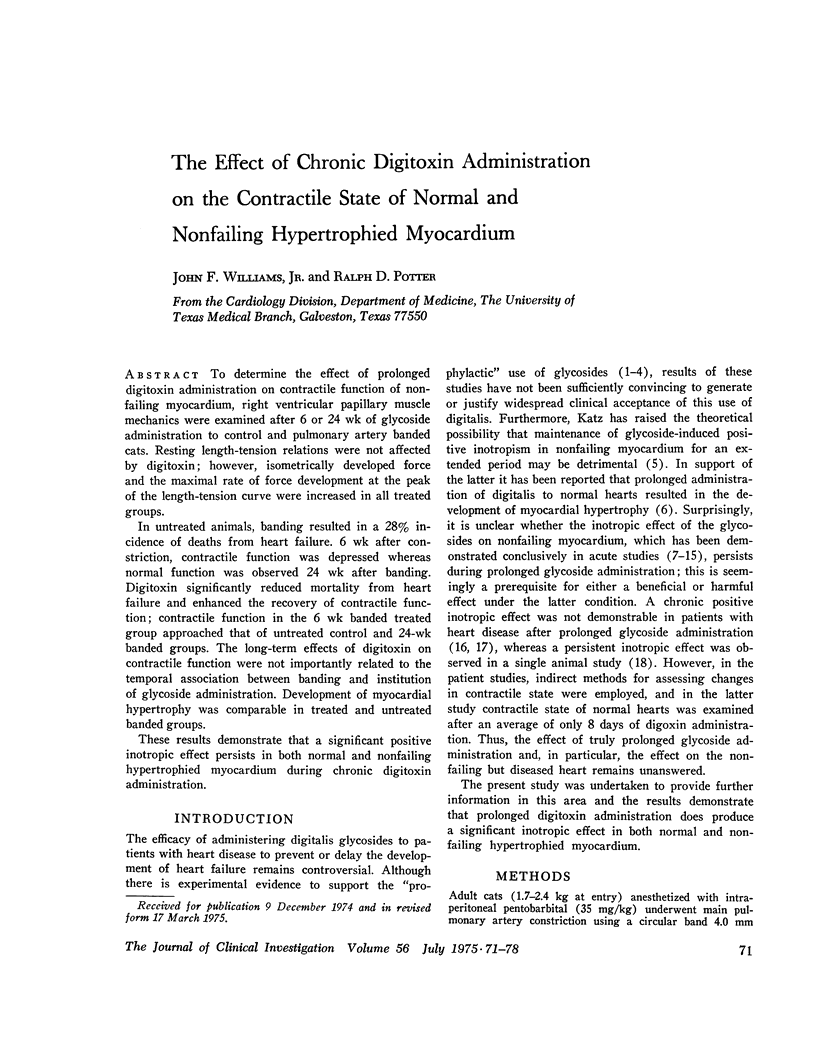
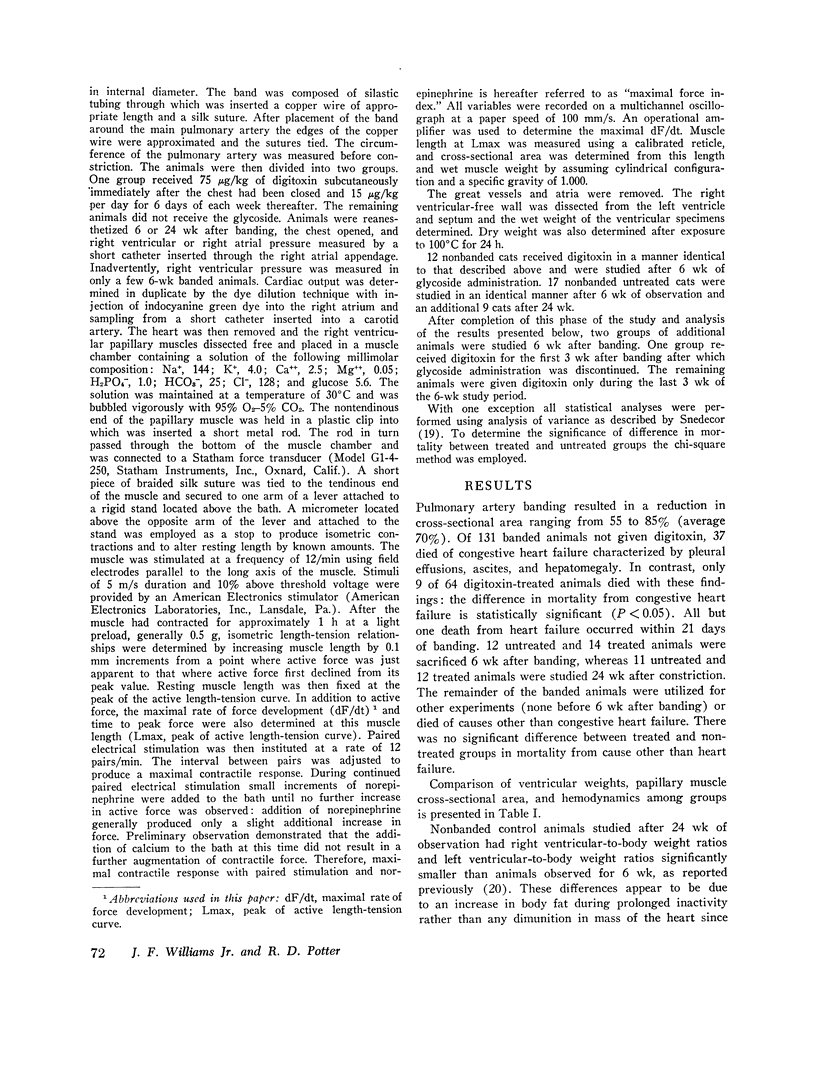
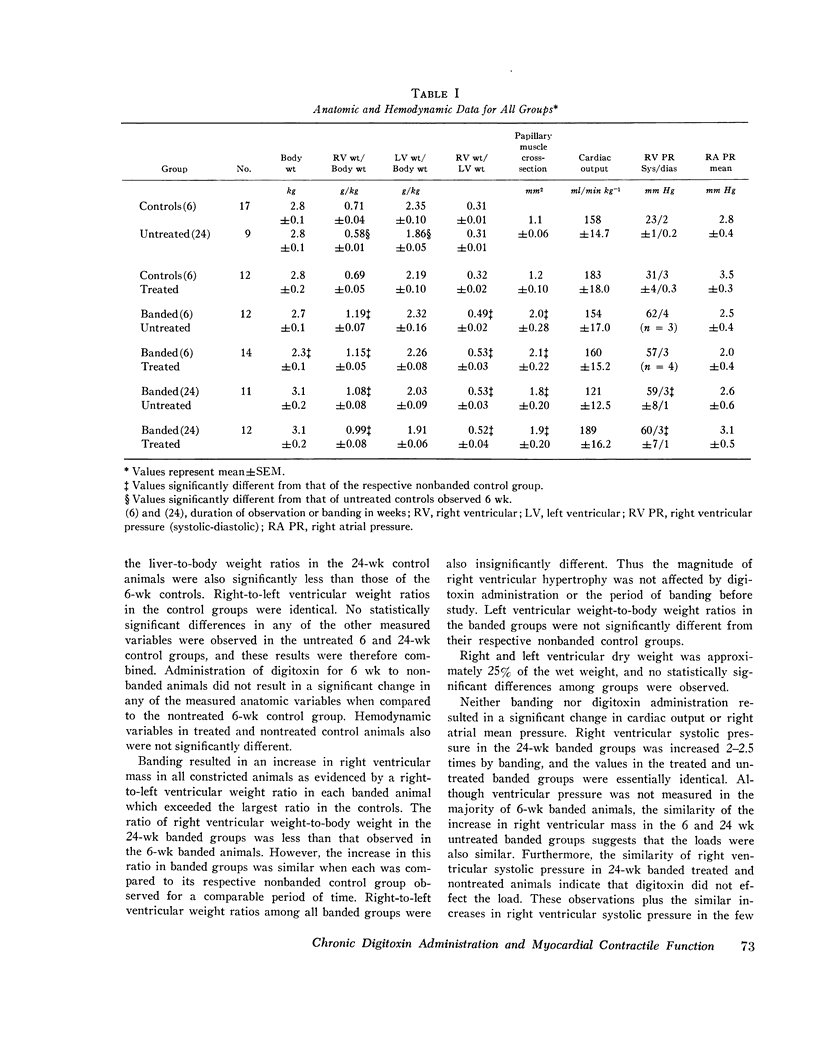
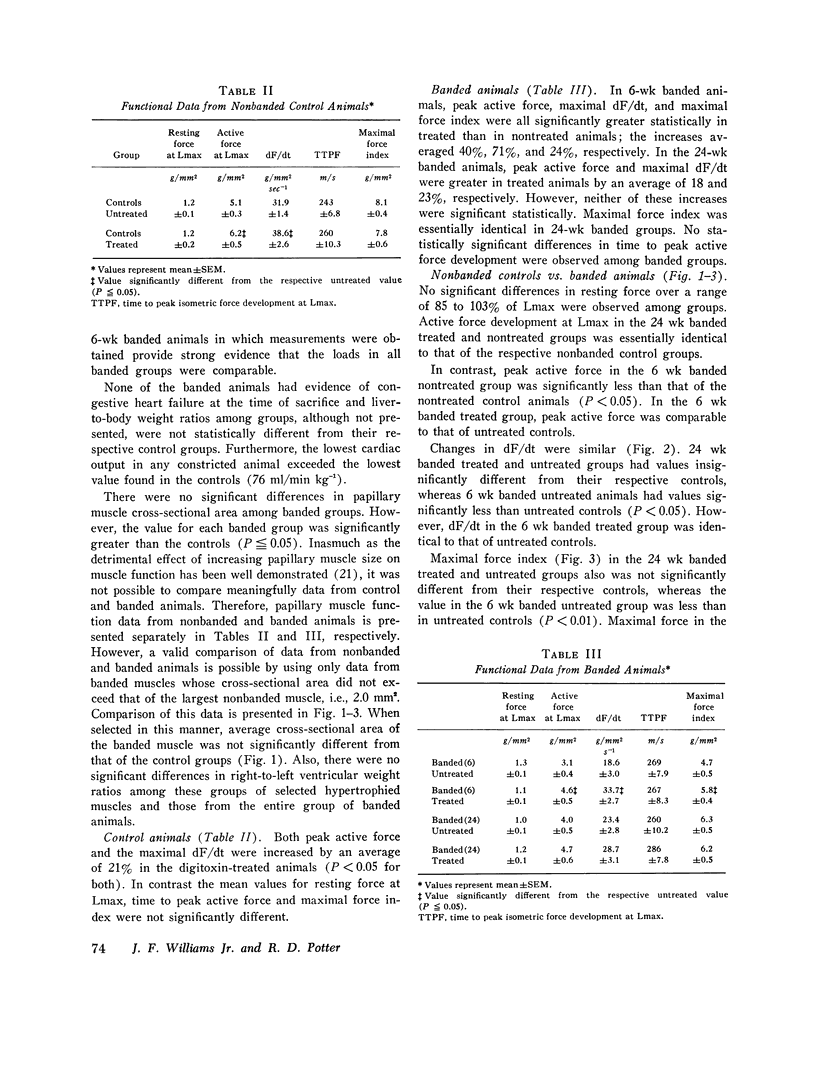
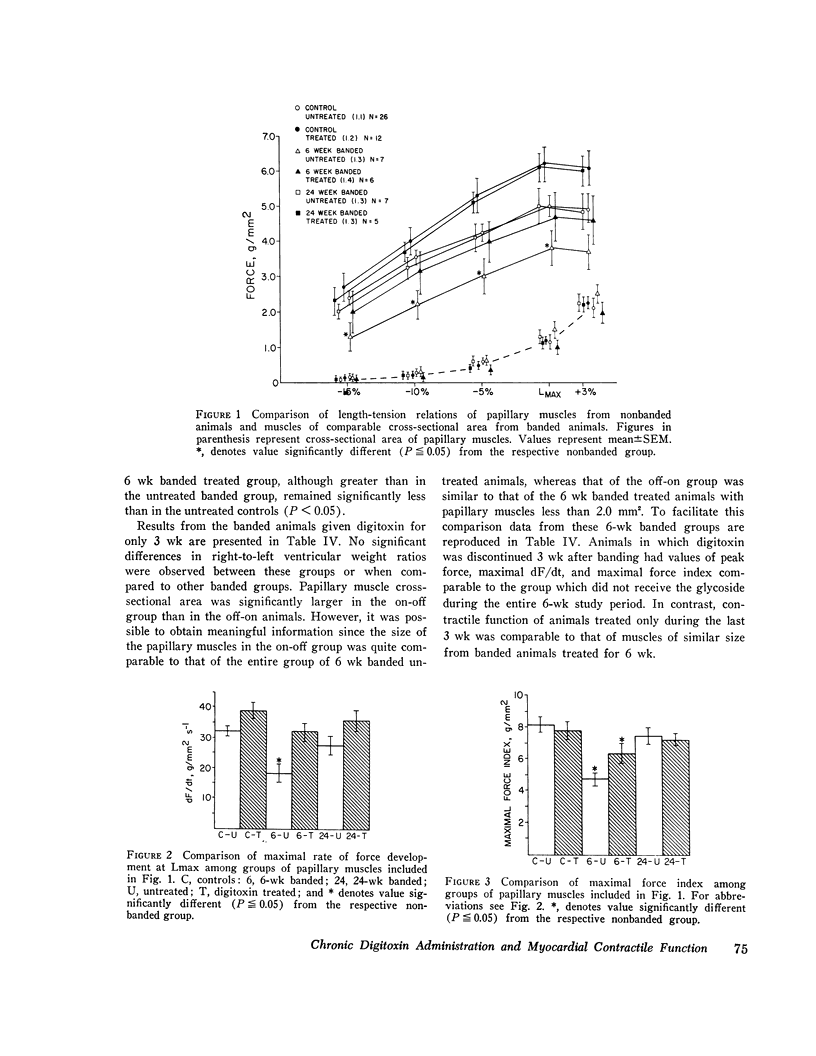
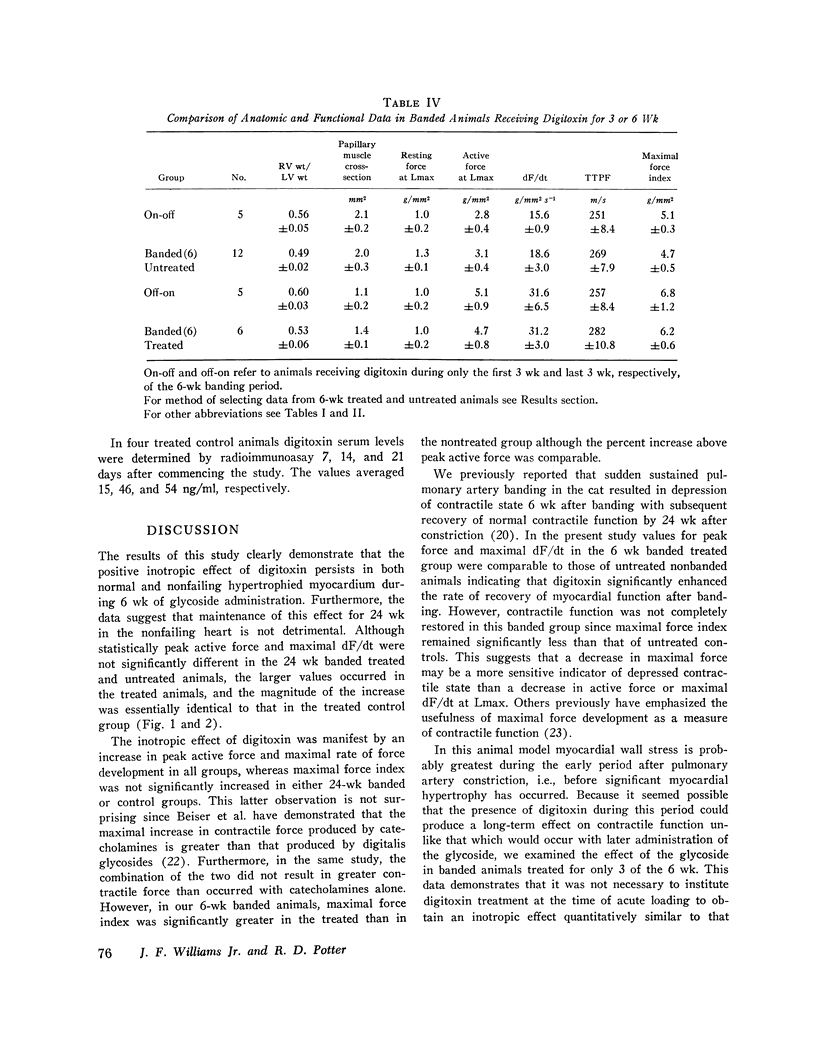
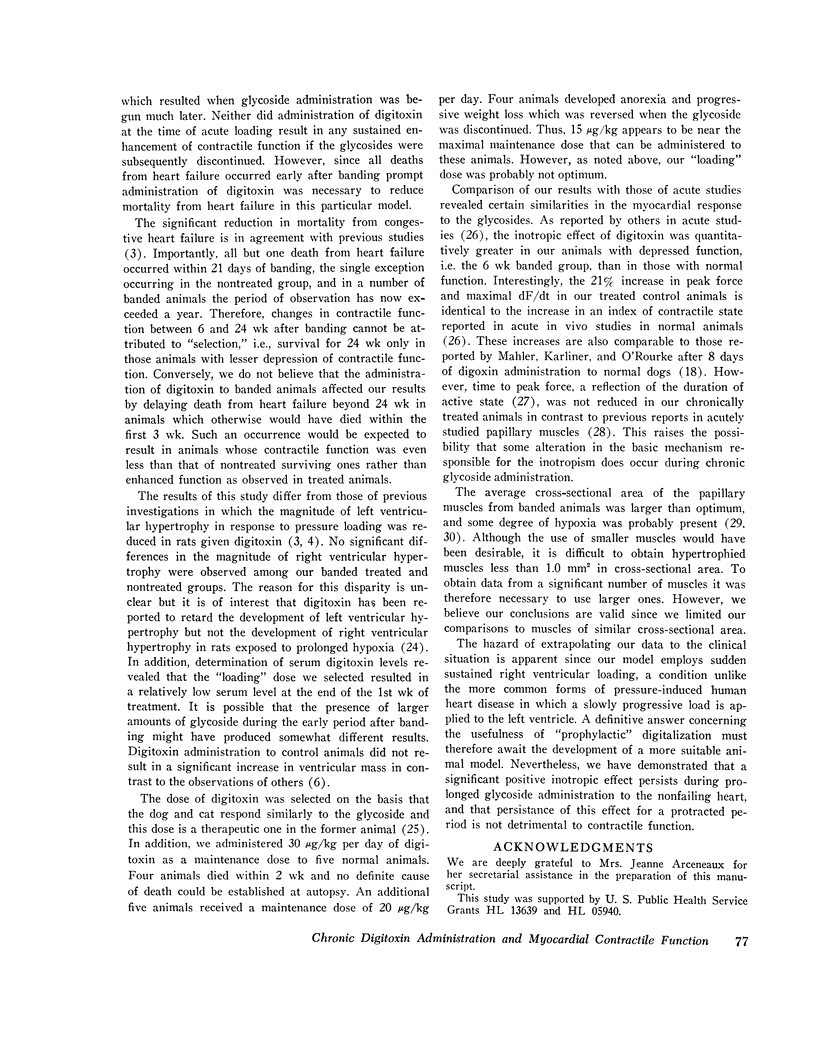
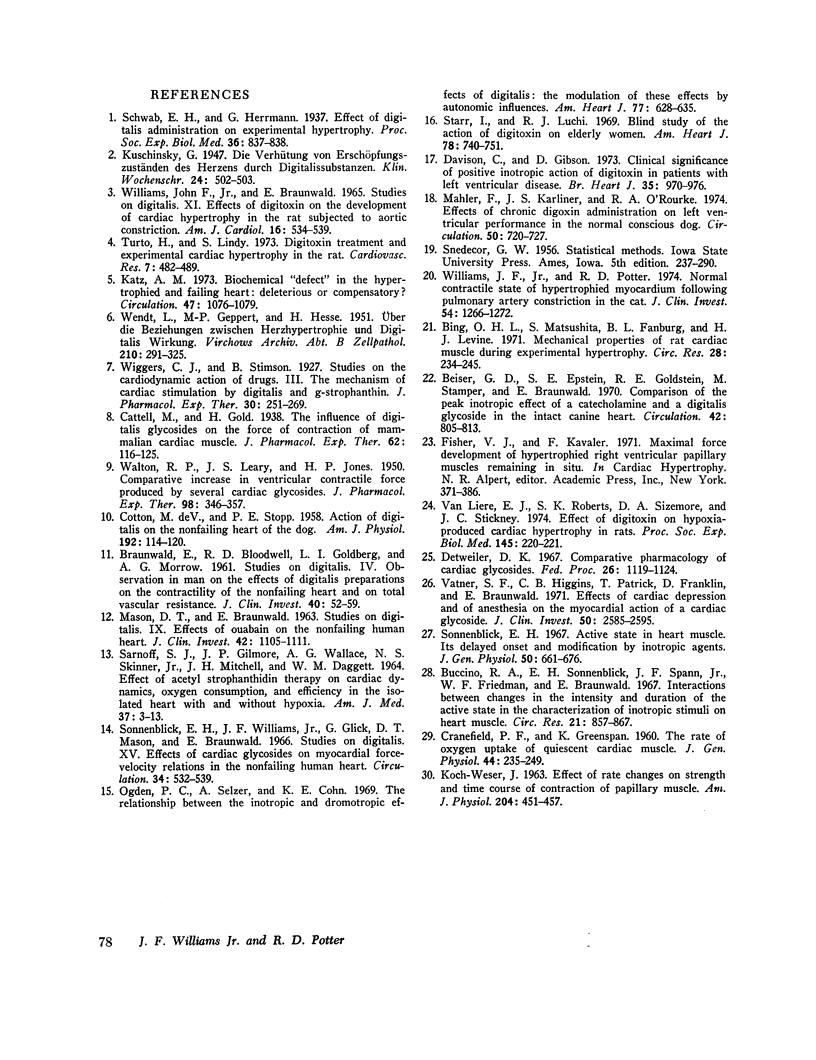
Selected References
These references are in PubMed. This may not be the complete list of references from this article.
- Beiser G. D., Epstein S. E., Goldstein R. E., Stampfer M., Braunwald E. Comparison of the peak inotropic effects of a catecholamine and a digitalis glycoside in the intact canine heart. Circulation. 1970 Nov;42(5):805–813. doi: 10.1161/01.cir.42.5.805. [DOI] [PubMed] [Google Scholar]
- Bing O. H., Matsushita S., Fanburg B. L., Levine H. J. Mechanical properties of rat cardiac muscle during experimental hypertrophy. Circ Res. 1971 Feb;28(2):234–245. doi: 10.1161/01.res.28.2.234. [DOI] [PubMed] [Google Scholar]
- Braunwald E., Bloodwell R. D., Goldberg L. I., Morrow A. G. STUDIES ON DIGITALIS. IV. OBSERVATIONS IN MAN ON THE EFFECTS OF DIGITALIS PREPARATIONS ON THE CONTRACTILITY OF THE NON-FAILING HEART AND ON TOTAL VASCULAR RESISTANCE. J Clin Invest. 1961 Jan;40(1):52–59. doi: 10.1172/JCI104236. [DOI] [PMC free article] [PubMed] [Google Scholar]
- Buccino R. A., Sonnenblick E. H., Spann J. F., Jr, Friedman W. F., Braunwald E. Interactions between changes in the intensity and duration of the active state in the characterization of inotropic stimuli on heart muscle. Circ Res. 1967 Dec;21(6):857–867. doi: 10.1161/01.res.21.6.857. [DOI] [PubMed] [Google Scholar]
- COTTEN M. D., STOPP P. E. Action of digitalis on the nonfailing heart of the dog. Am J Physiol. 1958 Jan;192(1):114–120. doi: 10.1152/ajplegacy.1957.192.1.114. [DOI] [PubMed] [Google Scholar]
- CRANEFIELD P. F., GREENSPAN K. The rate of oxygen uptake of quiescent cardiac muscle. J Gen Physiol. 1960 Nov;44:235–249. doi: 10.1085/jgp.44.2.235. [DOI] [PMC free article] [PubMed] [Google Scholar]
- Davidson C., Gibson D. Clinical significance of positive inotropic action of digoxin in patients with left ventricular disease. Br Heart J. 1973 Sep;35(9):970–976. doi: 10.1136/hrt.35.9.970. [DOI] [PMC free article] [PubMed] [Google Scholar]
- Detweiler D. K. Comparative pharmacology of cardiac glycosides. Fed Proc. 1967 Jul-Aug;26(4):1119–1124. [PubMed] [Google Scholar]
- KOCH-WESER J. Effect of rate changes on strength and time course of contraction of papillary muscle. Am J Physiol. 1963 Mar;204:451–457. doi: 10.1152/ajplegacy.1963.204.3.451. [DOI] [PubMed] [Google Scholar]
- Katz A. M. Biochemical "defect" in the hypertrophied and failing heart: deleterious or compensatory? Circulation. 1973 May;47(5):1076–1079. doi: 10.1161/01.cir.47.5.1076. [DOI] [PubMed] [Google Scholar]
- Mahler F., Karliner J. S., O'Rourke R. A. Effects of chronic digoxin administration on left ventricular performance in the normal conscious dog. Circulation. 1974 Oct;50(4):720–727. doi: 10.1161/01.cir.50.4.720. [DOI] [PubMed] [Google Scholar]
- Mason D. T., Braunwald E. STUDIES ON DIGITALIS. IX. EFFECTS OF OUABAIN ON THE NONFAILING HUMAN HEART. J Clin Invest. 1963 Jul;42(7):1105–1111. doi: 10.1172/JCI104796. [DOI] [PMC free article] [PubMed] [Google Scholar]
- Ogden P. C., Selzer A., Cohn K. E. The relationship between the inotropic and dromotropic effects of digitalis: the modulation of these effects by autonomic influences. Am Heart J. 1969 May;77(5):628–635. doi: 10.1016/0002-8703(69)90547-x. [DOI] [PubMed] [Google Scholar]
- SARNOFF S. J., GILMORE J. P., WALLACE A. G., SKINNER N. S., Jr, MITCHELL J. H., DAGGETT W. M. EFFECT OF ACETYL STROPHANTHIDIN THERAPY ON CARDIAC DYNAMICS, OXYGEN CONSUMPTION AND EFFICIENCY IN THE ISOLATED HEART WITH AND WITHOUT HYPOXIA. Am J Med. 1964 Jul;37:3–13. doi: 10.1016/0002-9343(64)90207-4. [DOI] [PubMed] [Google Scholar]
- Sonnenblick E. H. Active state in heart muscle. Its delayed onset and modification by inotropic agents. J Gen Physiol. 1967 Jan;50(3):661–676. doi: 10.1085/jgp.50.3.661. [DOI] [PMC free article] [PubMed] [Google Scholar]
- Sonnenblick E. H., Williams J. F., Jr, Glick G., Mason D. T., Braunwald E. Studies on digitalis. XV. Effects of cardiac glycosides on myocardial force-velocity relations in the nonfailing human heart. Circulation. 1966 Sep;34(3):532–539. doi: 10.1161/01.cir.34.3.532. [DOI] [PubMed] [Google Scholar]
- Starr I., Luchi R. J. Blind study on the action of digitoxin on elderly women. Am Heart J. 1969 Dec;78(6):740–751. doi: 10.1016/0002-8703(69)90440-2. [DOI] [PubMed] [Google Scholar]
- Turto H., Lindy S. Digitoxin treatment and experimental cardiac hypertrophy in the rat. Cardiovasc Res. 1973 Jul;7(4):482–489. doi: 10.1093/cvr/7.4.482. [DOI] [PubMed] [Google Scholar]
- Van Liere E. J., Roberts S. K., Sizemore D. A., Stickney J. C. Effect of digitoxin on hypoxia-produced cardiac hypertrophy in rats. Proc Soc Exp Biol Med. 1974 Jan;145(1):220–221. doi: 10.3181/00379727-145-37781. [DOI] [PubMed] [Google Scholar]
- Vatner S. F., Higgins C. B., Patrick T., Franklin D., Braunwald E. Effects of cardiac depression and of anesthesia on the myocardial action of a cardiac glycoside. J Clin Invest. 1971 Dec;50(12):2585–2595. doi: 10.1172/JCI106759. [DOI] [PMC free article] [PubMed] [Google Scholar]
- WALTON R. P., LEARY J. S., JONES H. P. Comparative increase in ventricular contractile force produced by several cardiac glycosides. J Pharmacol Exp Ther. 1950 Apr;98(41):346–357. [PubMed] [Google Scholar]
- WENDT L., GEPPERT M. P., HESSE H. Uber die Beziehungen zwischen Herzhypertrophie und Digitaliswirkung. Virchows Arch Pathol Anat Physiol Klin Med. 1951;320(4):291–325. doi: 10.1007/BF01265349. [DOI] [PubMed] [Google Scholar]
- Williams J. F., Jr, Braunwald E. Studies on digitalis. XI. Effects of digitoxin on the development of cardiac hypertrophy in the rat subjected to aortic constriction. Am J Cardiol. 1965 Oct;16(4):534–539. doi: 10.1016/0002-9149(65)90030-5. [DOI] [PubMed] [Google Scholar]
- Williams J. F., Jr, Potter R. D. Normal contractile state of hypertrophied myocardium after pulmonary artery constriction in the cat. J Clin Invest. 1974 Dec;54(6):1266–1272. doi: 10.1172/JCI107871. [DOI] [PMC free article] [PubMed] [Google Scholar]


